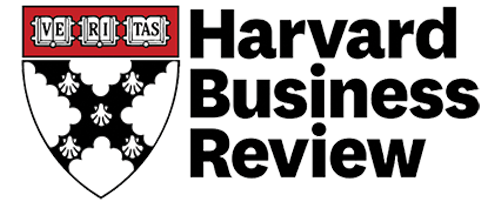“The Great Resignation” keeps growing before our eyes. Every month, the ranks of the resigned swell some more — nearly 57 million Americans quit between January 2021 and February 2022. Many companies seem to be struggling for answers in the face of skyrocketing attrition rates.
How to stanch the bleeding? Perhaps a better idea is to change the narrative. Instead of focusing on one outcome — resignation — we need to understand the more nuanced and transformative underlying process: a series of individual journeys that Mike has termed “The Great Exploration.”
Pandemic life forced everyone to reexamine their personal and professional priorities. Remote work alerted us to the possibility of decoupling jobs from geography. And a seller’s labor market empowers us to pursue it. It’s a personal awakening incubating an exploratory movement that is reshaping how and why we work, live, and think about our futures. “People aren’t just quitting their jobs, they’re rejecting the idea that burnout is the price they have to pay for success,” said Arianna Huffington, founder and CEO of Thrive Global, the behavior change technology company.
“Exploration” is a more constructive and empowering frame than “resignation.” If you’re focused on the latter, you’re reacting to a symptom rather than addressing the root cause. Leaders who reorient themselves around exploration, rather than fear of resignation, will be able to capitalize on the moment’s deep potential. If you embrace the exploration with empathy and support, you can position your company and its most valuable resource — your people — for personal and professional renaissances.
To better understand how smart companies are facilitating the Great Exploration, Keith convened a roundtable of chief human resources officers as part of Go Forward to Work, the project he started to monitor the new way of work’s best practices during the pandemic. We discerned four key themes:
Prioritize purpose.
Covid-19 has reoriented workers, who are asking: Why do I do what I do? What am I good at? How can I thrive?
Help them explore these questions. Employees who have discovered their purpose are 49% more likely to report intrinsic motivation, 33% more likely to express higher job satisfaction, and 25% more likely to go the extra mile, according to London School of Economics research commissioned by Unilever. “The irony is that if you ask most CHROs what the number-one reason people are leaving is, the answer won’t be purpose — because we don’t ask,” observes Johnson Controls’s CHRO, Marlon Sullivan, who notes that exit surveys typically ask about managers, culture, compensation, and other factors. “But…is purpose a key factor? Absolutely.”
Have one-on-one conversations with your direct reports to understand what energizes them and what might make them consider leaving. Then act on the answer. “That dedicated hour you’re investing in somebody is an indicator that you value them, you see what they bring — and know they can bring even more,” CareCentrix’s CHRO Caryn Ciaio said. “It’s about understanding what their why is.”
You can also offer resources and support, such as BetterUp’s coaching and transformation platform, to help employees stay aligned not only to their values but also to their evolving needs and aspirations. Unilever offers a “Discover Your Purpose” workshop that has helped more than 54,000 employees identify what drives them. Such tools can help provide experiences that foster personal and professional growth as well as a sense of belonging.
Support flexibility.
Modern remote tools can do so much more to enhance collaboration, support, and flexibility than what we have seen during the pandemic. Show your workers that you’ll use these tools to empower them to find the new fulcrum of their life-work balance.
Institute peer-to-peer support groups, a combination of small, connected clusters offering both encouragement and accountability. That’s what Weight Watchers did when it pivoted to remote-only career coaching for its employees, creating groups whose focus ranged from how to be the best online coach to solving child care challenges. Then think about how to build flexibility into your employees’ schedules, whether by piloting four-day work-weeks, as Unilever has done, or by cutting meeting time by emphasizing asynchronous and hybrid work, as GitLab and Dropbox have done. Not every solution will fit every company, but each company will be able to find a solution that fits.
Finally, find creative ways to offer additional benefits to your team. Remember that they’re not just workers, they’re members of your community. If you’re promoting professional development through a coaching program or opportunity such as LinkedIn Learning, make it available to their families. Unilever has opened up its digital learning platform, Degreed, to employees’ families, for example. This practice, which Procore chief people officer Pat Wadors calls “profit-sharing with your community,” can deepen their loyalty.
Bring variety and passion to the workday.
According to our roundtable conversations, experiential variety appeals to employees more than a single track. So breed that ethos into your company’s DNA.
What does that look like? Smart companies are creating professional ecosystems in which workers can move around. Unilever uses Flex, an internal platform where people post short-term work opportunities across the company. The platform has 10,000 active users, who are able to get experience with and exposure to different parts of the company. And that approach can extend outward: Unilever is looking at ways to work with partner organizations on how to flex resources between companies.
Also encourage your employees to pursue passion projects that also nourish their purpose. One Intel team, for example, mandates that its members devote up to 20% of their time to these projects, which can be a nonprofit initiative or pro bono work or a totally new venture.
EY has a corporate responsibility program, called EY Ripples, to mobilize employees to help solve today’s urgent social and environmental challenges. Sarah Francis, a strategic relationships leader at EY Americas, told us about Nzingha Prescod, a former Olympic fencer on her data team who got an EY Ripples grant for her nonprofit, Fencing in the Park, and spends her time working on that. “That’s just created energy and momentum,” Francis said. “Particularly for Gen-Zers and millennials, it’s another path to both stay engaged and employed but also live that purpose and provide impact.”
Create brand ambassadors.
Sometimes the Great Exploration will still lead to a departure — and that’s fine. “Allow them to leave and they become brand ambassadors for your company — but with a view that they may eventually return,” said Michael Fraccaro, Mastercard’s CHRO. “You’ve created alumni who may come full circle.”
Headspace tracks its “boomerang employees,” former CEO Cece Morken said. “It made them more valuable to us: They got outside our walls and then came back with different experiences,” she noted.
A return policy can be formalized in sabbaticals or fellowships or just an informal open-door return policy. If you care for your team, you should want what’s right for them professionally. They’ll understand and appreciate that, and if you’ve co-created your culture properly, they’ll be your best corporate missionaries, telling everyone about your good work.
At a time when workers are more deeply aware of the need to continuously stay relevant, skilled, and ready — and they’re exploring their options — they want an employer that supports their growth. When you commit to developing their skills in an environment where they can flourish, your employees can become the best versions of themselves, for work and for life.
This is a journey, and these ideas are just a start. We’re always looking for more best practices. Let us know at Go Forward to Work how you’re fostering the Great Exploration. It’s an exciting new world of work — let’s traverse it together.






